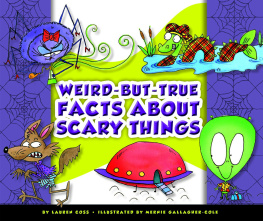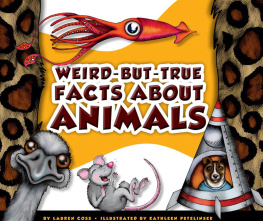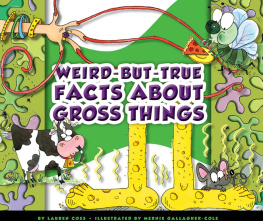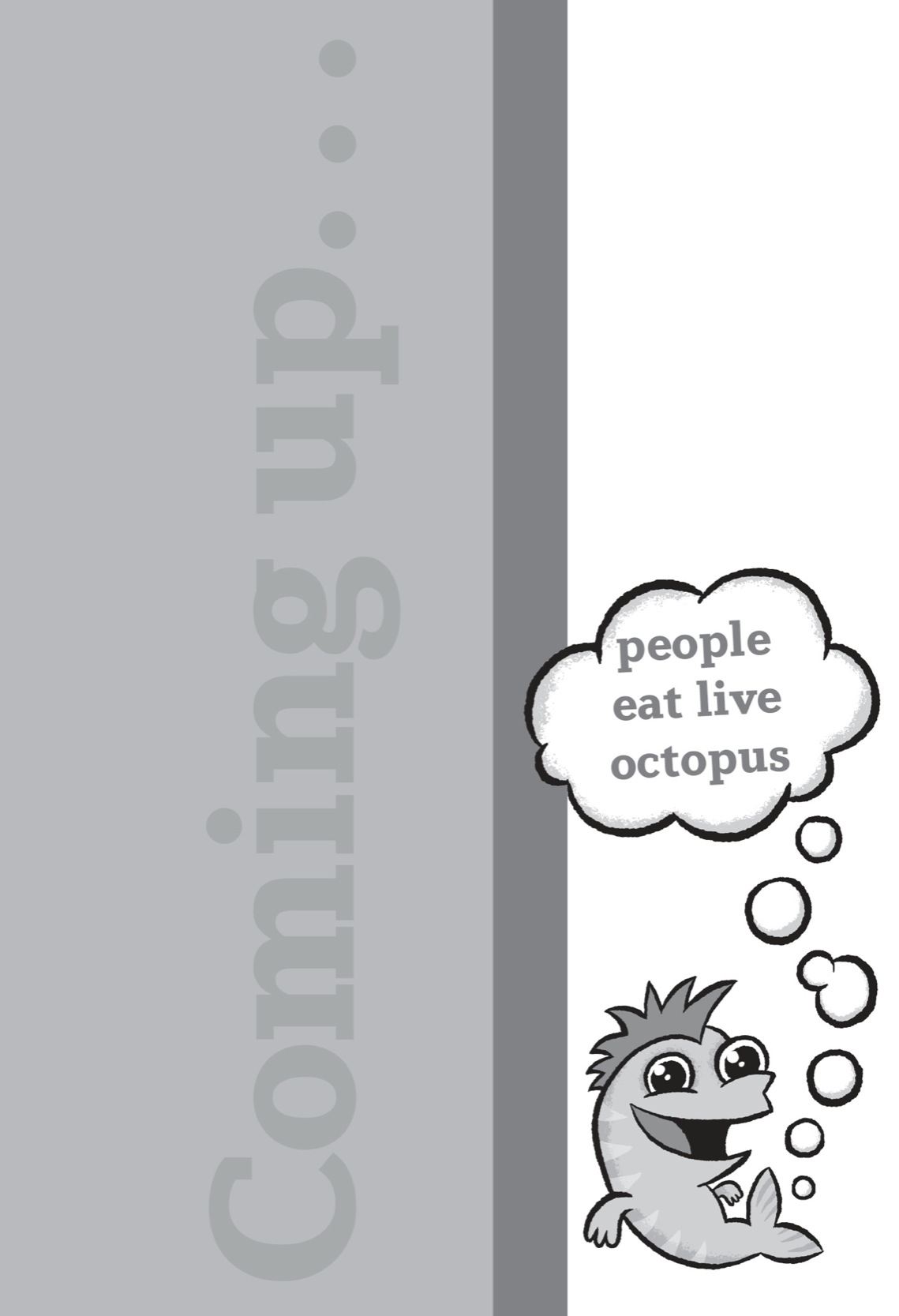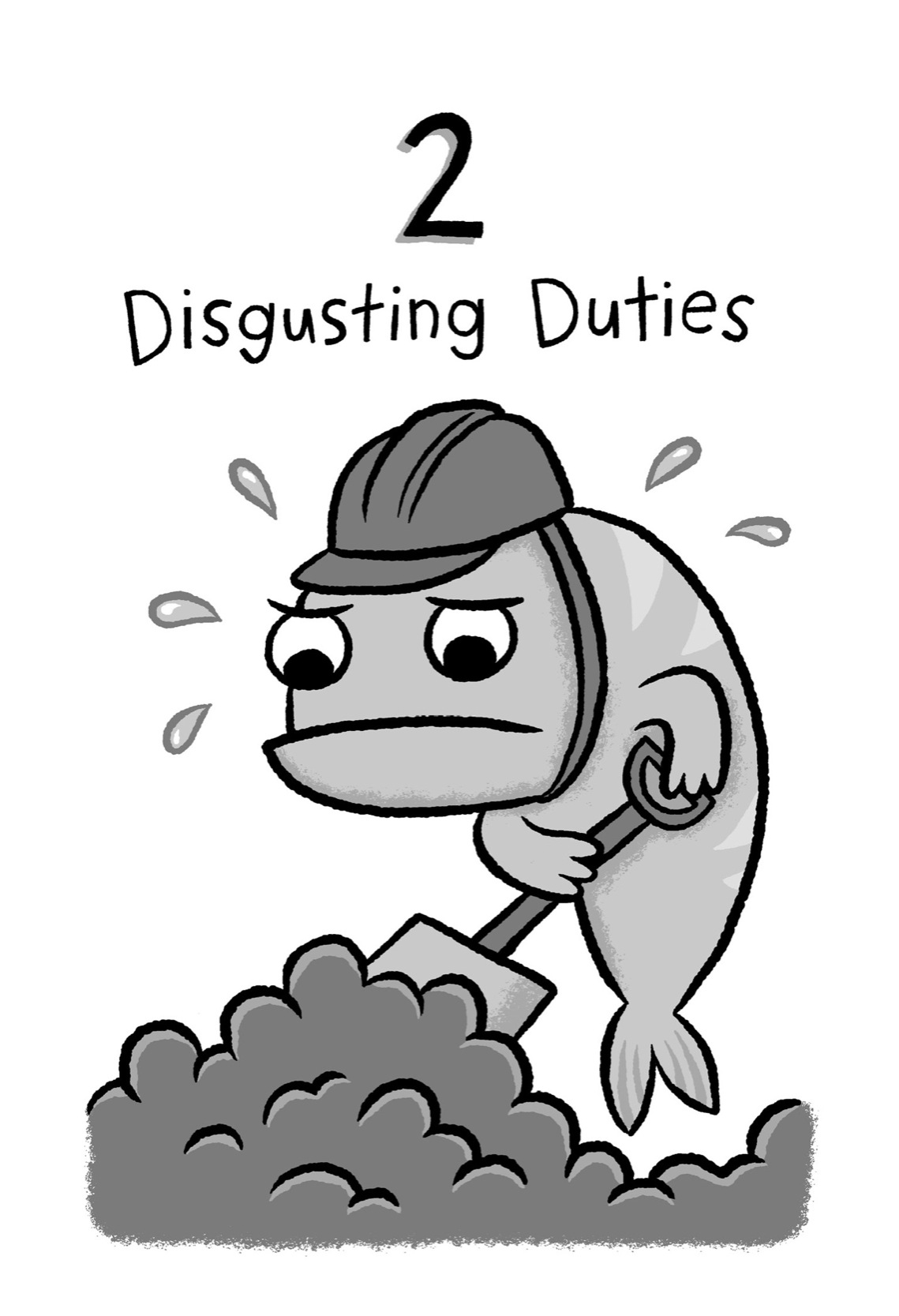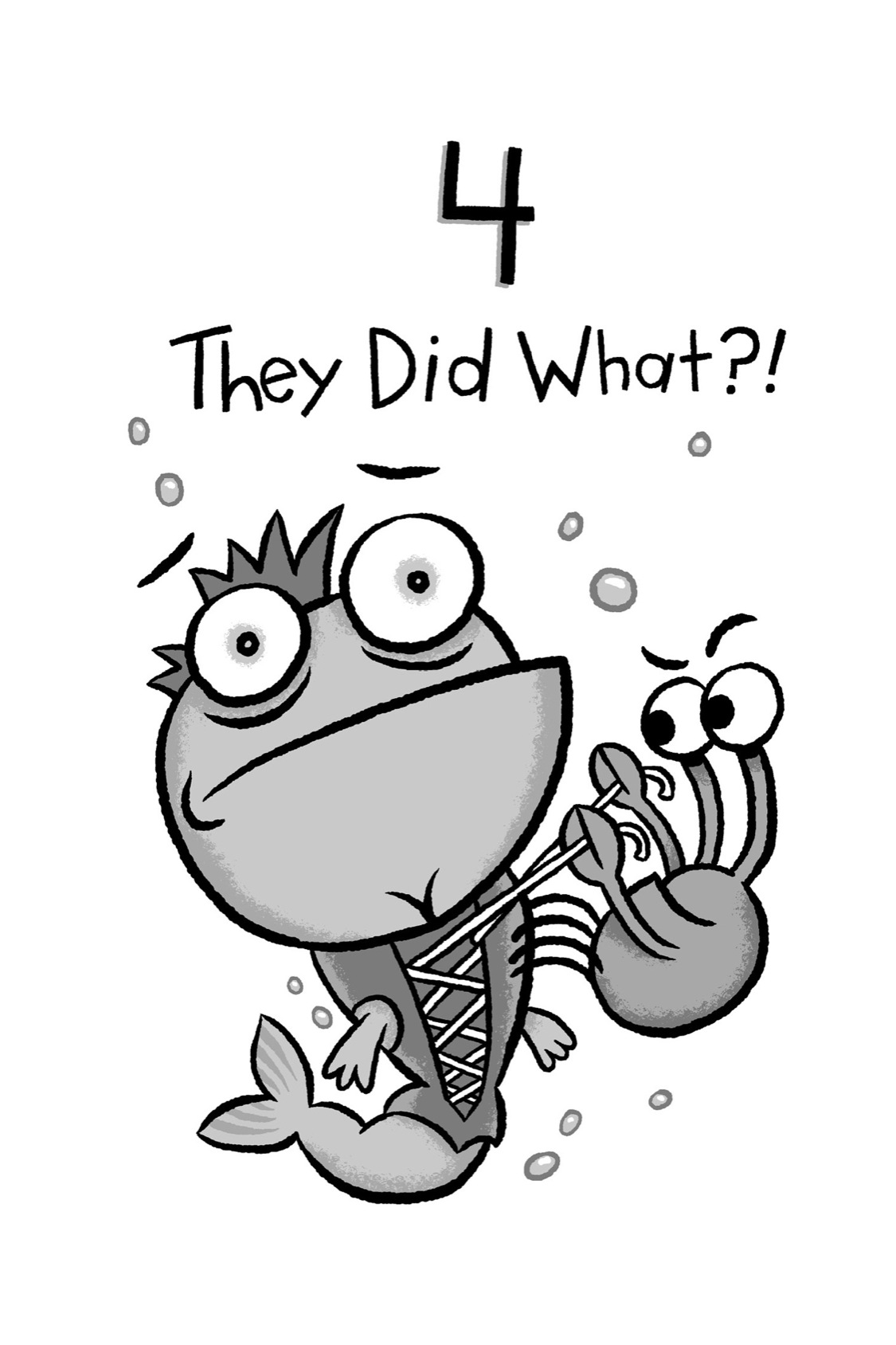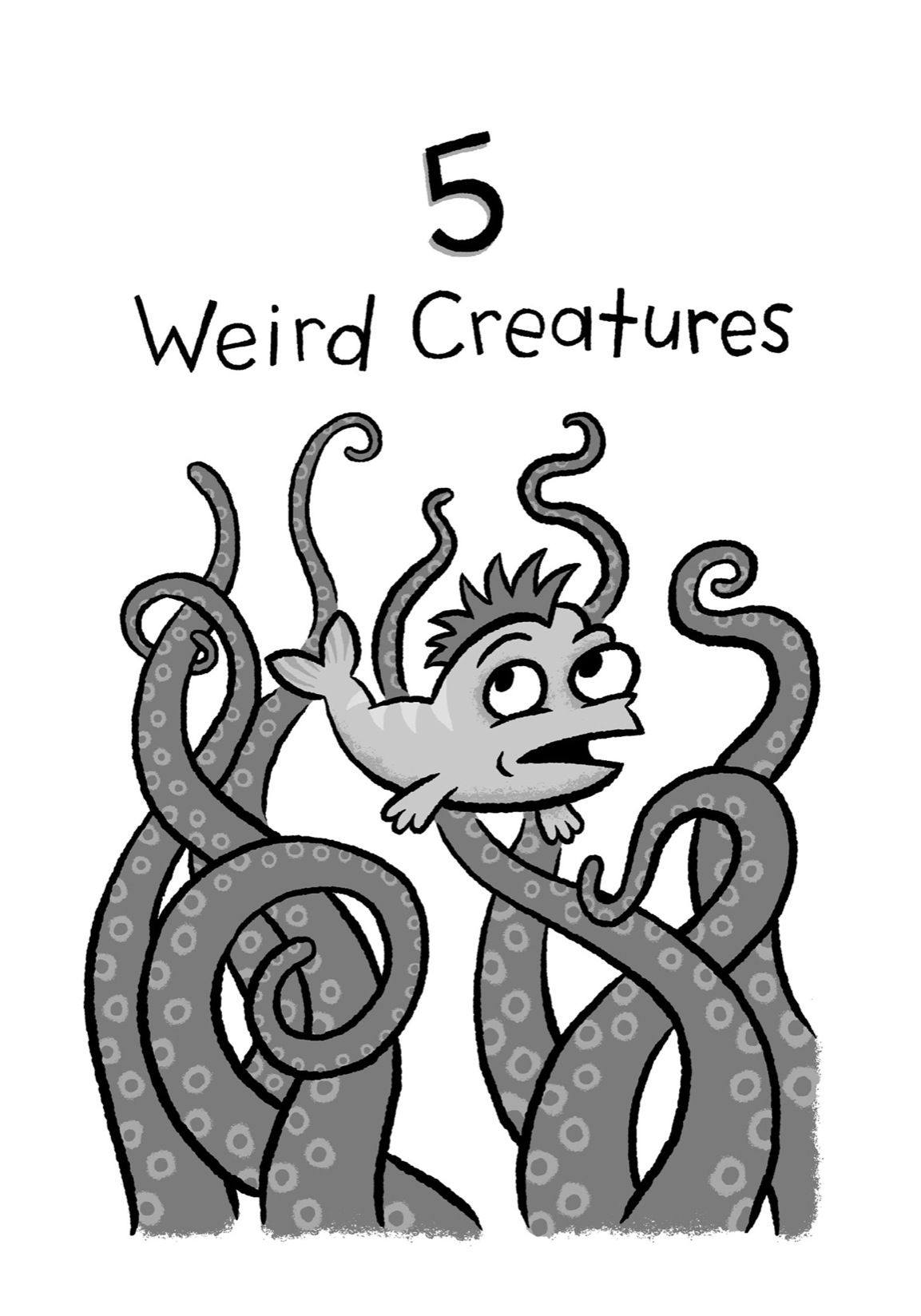Learn more gross but true facts in
Why You Shouldnt Eat Your Boogers:
Gross but True Things You Dont Want to Know About Your Body
Why Dogs Eat Poop:
Gross but True Things You Never Knew About Animals
This book is dedicated to Andrew Bedale and my gorgeous daughter, Sienna
G. P. PUTNAMS SONS
Published by the Penguin Group
Penguin Group (USA) LLC
375 Hudson Street
New York, NY 10014

USA | Canada | UK | Ireland | Australia
New Zealand | India | South Africa | China
penguin.com
A Penguin Random House Company
Text copyright 2009 by Francesca Gould.
Originally published in 2009 by Piatkus as Horny Lizards and Headless Chickens.
First American edition 2009, Tarcher/Penguin.
Abridgement copyright 2014 Penguin Group (USA)
Illustrations copyright 2014 by JP Coovert.
Penguin supports copyright. Copyright fuels creativity, encourages diverse voices, promotes free speech, and creates a vibrant culture. Thank you for buying an authorized edition of this book and for complying with copyright laws by not reproducing, scanning, or distributing any part of it in any form without permission. You are supporting writers and allowing Penguin to continue to publish books for every reader.
Library of Congress Cataloging-in-Publication Data
Gould, Francesca, author.
Why fish fart : gross but true things youll wish you didnt know / Francesca Gould;
illustrated by JP Coovert.[Abridged edition].
pages cm
Abridged from: Why fish fart. New York : Jeremy P. Tarcher, 2009.
Originally published in 2009 by Piatkus as Horny lizards and headless chickens.
1. Curiosities and wondersJuvenile literature. I. Coovert, J. P., illustrator. II. Title.
AG243.G632 2014
031.02dc23
2013025517
ISBN 978-0-698-15837-5
Version_1
How Do You Make Birds Nest Soup ?
The Chinese delicacy birds nest soup is one of those rare dishes that sounds incredibly gross but is in fact far, far worse.
This rare and expensive soup is made from the nests of a certain type of swift that lives in caves in Southeast Asia. The nests themselves are made from the birds saliva. This saliva sets into solid, cement-like threads that cling to the cave roofs.
the nests are made from the birds saliva
Collecting the swiftlets nests from the bat-filled caves is a very ancient and very dangerous job. Nest collectors have to climb extremely high and use long bamboo poles to remove the nests.
To make birds nest soup, chefs simmer the nests, often in chicken broth, for hours, until they become rubbery. This dish has been highly esteemed since the Ming dynasty, and it is said there is no higher honor one can bestow upon a guest than to serve them birds nest soup. The soup is prized for its rich nutrient content and supposed health benefits. For centuries, the Chinese have encouraged their children to eat the soup, believing it will boost their immune systems.
Who Eats Tarantula Omelets ?
Despite its frightening appearance, the tarantula spider is regarded as a delicacy by a number of cultures around the world. For example, roasted tarantula is eaten by the Bushmen of central Africa, while people in northern Thailand reportedly like to strip off the spiders legs and roast the bodies. The Piaroa Indians of Venezuela enjoy eating the big, hairy, bird-eating goliath tarantula (Theraphosa blondi), which has a leg span of 10 inches (25 cm), and an abdomen the size of a tennis ball. The whole thing is the size of a dinner plate!
Tarantula fangs make excellent toothpicks!
The Piaroa hunt for tarantulas and when theyve caught one, they bend its legs backward over its body and tie them together. Next, a leaf is used to twist off the abdomen (to avoid touching the hairs, which can irritate the skin) and the spider is then rolled in a leaf and roasted in hot coals. Once its cooked, the spider is eaten by picking out the bits of flesh, rather like eating a crab. Apparently, tarantulas taste a bit like shrimp. Bits of the meat can get stuck between your teeth, but luckily the tarantulas long fangs make excellent toothpicks!
The eating of spiders is also very popular in Cambodia and Laos, where they are commonly toasted on bamboo skewers over a fire and served whole with salt or chilies. Alternatively, some people prefer their spiders fried in butter with a clove of garlic.
What Is Dancing-Eating ?
Dancing-eating, the slang name for odorigui, is the Japanese practice of eating live animals. One common odorigui dish is a small, transparent fish called shirouo. More adventurous diners prefer to feast on live octopus. To prepare this dish, the chef will remove the live octopus from a large tank, slice off one tentacle, and then simply serve it on a plate with some soy sauce. Apparently, the limb continues to writhe and twist on your plate, and when you eat it, the suckers attach themselves to the roof of your mouth.
The Japanese are not alone in their taste for very, very fresh meat. In China, there is a popular dish called drunken shrimp, which is also eaten live. When the dish arrives, the shrimp are thrashing around in a bowl of sweet alcohol (with a lid so they wont escape). The shrimp should be left to swim in the alcohol for about five minutes before being eaten. The diner then plucks a shrimp from the bowl with chopsticks, removes the shrimps head with his or her fingers, and then munches on its twitching body. The Japanese also enjoy a similar dish called drunken crab.


